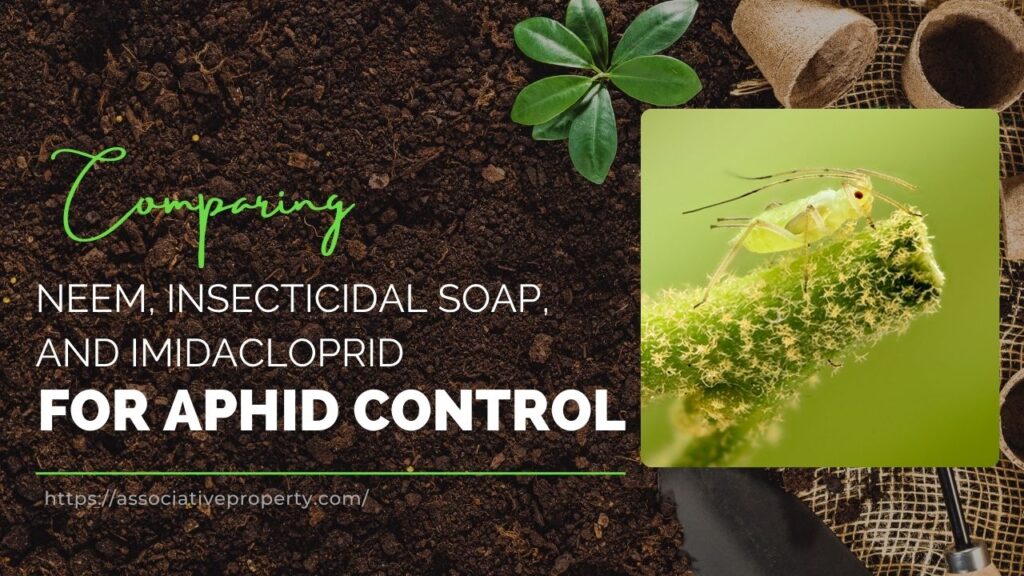When the monsoon arrives, my garden comes alive. Over the years, I discovered that there are 10 vegetables that not only grow easily at home but groom beautifully during this season. Let me take you through my journey of growing these amazing vegetables, and how you can too!
| Vegetable | Ideal Temperature | Germination Time | Harvest Time | Recommended Pot Size | Sunlight Needs | Special Note |
|---|---|---|---|---|---|---|
| Tomato | 21–27°C (70–80°F) | 5–10 days | 60–80 days | 12–18 inches | 6–8 hours/day | Use nutrient-rich soil; needs staking. |
| Coriander | 17–27°C (63–80°F) | 7–14 days | 40–50 days | 8–10 inches | 4–6 hours/day | Avoid overwatering; prefers cooler temps. |
| Lemon | 24–32°C (75–90°F) | N/A (buy sapling) | 6–12 months | 18–24 inches | 8+ hours/day | Needs grafted saplings for faster yield. |
| Lady Finger (Okra) | 24–30°C (75–86°F) | 7–10 days | 50–60 days | 10–12 inches | 6+ hours/day | Harvest young for tender pods. |
| Ridge Gourd | 25–35°C (77–95°F) | 6–10 days | 55–70 days | 12–18 inches (with trellis) | 6–8 hours/day | Provide strong support for vines. |
| Brinjal (Eggplant) | 22–30°C (72–86°F) | 7–14 days | 80–100 days | 14–18 inches | 6–8 hours/day | Prefers warm weather; prone to pests. |
| Cauliflower | 15–20°C (59–68°F) | 5–10 days | 60–80 days | 12–16 inches | 6+ hours/day | Best grown in cooler months. |
| Bitter Gourd | 25–35°C (77–95°F) | 7–14 days | 55–70 days | 12–18 inches (with trellis) | 6–8 hours/day | Needs good drainage; short life cycle. |
| Onion/Spring Onion | 13–25°C (55–77°F) | 7–10 days | 90–120 days (for bulb); 30–40 days (for greens) | 10–12 inches | 6 hours/day | Spring onions are faster than bulbs. |
| Spinach | 10–24°C (50–75°F) | 5–7 days | 40–50 days | 8–10 inches | 4–6 hours/day | Grows best in cool weather. |
Related: Top 10 Easy Indoor Plants for Beginners (Or Not): My Personal List
1. Tomatoes: The Heart of Every Dish
Tomatoes are everyone’s favorite, and they were the first vegetable I decided to grow. I simply sliced a tomato into small pieces, covered it with a thin layer of cocopeat, watered it, and left it alone. Within 15 days, tiny plants started appearing.
When the plants grew strong, I transplanted them into larger pots. Tomatoes don’t demand much—small pots work fine—but the bigger the pot, the bigger and juicier the tomatoes! Within just one to two months, I started harvesting beautiful tomatoes. I made sure they got at least 5–6 hours of sunlight daily, especially during winter and rainy seasons. Also, every 20 days, I enriched the soil with nutrient-rich fertilizer to keep them happy.
2. Coriander: Fragrant and Fresh
Coriander holds a special place in my garden, but I learned the hard way not to sow it directly during heavy rains. Instead, I used a wide, shallow pot and gently sowed the seeds. In no time, tiny green shoots appeared. Unlike the chemically-treated coriander from the market, my homegrown coriander was lush, nutritious, and chemical-free—perfect for my family’s health.
3. Lemons: Tiny Trees with Big Rewards
Growing lemons was a little tricky at first. I realized that if I poured water directly onto the leaves, they drooped quickly. So, I selected a healthy grafted lemon plant that already had flowers and tiny fruits.
Initially, it thrived in a small pot, yielding 40–50 lemons easily. Later, I moved it to a bigger pot to help it grow even better. Lemon plants love porous soil and full sunlight. Protecting them from insect attacks was crucial, and I learned to slightly reduce watering when the flowers started blooming to encourage fruit development.
4. Lady Finger (Okra): Kids’ Favorite!
Lady fingers, or okra, are a hit with kids—and with me too! I grew them effortlessly in 10-inch pots. From seedling to harvest, it took just about 7–10 days for the plants to establish themselves, and soon after, beautiful yellow flowers appeared.
One important lesson: I harvested the lady fingers as soon as they matured. Waiting too long made them hard and unfit for eating. By planting a few plants together, I could harvest a small, fresh batch daily—perfect for home-cooked, healthy meals.
5. Ridge Gourd: The Towering Vine
Ridge gourd was a revelation. Despite its small roots, the plant grew into a massive vine. I supported it with nets and sticks, helping it climb skyward.
Once the sun returned after the rains, the vine exploded with growth. Timely harvesting was key because if left too long, the gourds turned bitter and seed-filled.
6. Brinjal (Eggplant): The Long-Term Reward
Brinjal was surprisingly easy to grow. I sprinkled seeds just like I did for chillies, and soon enough, sturdy seedlings emerged. After transplanting them into larger pots, the plants kept producing brinjals for a long time.
There were periods when growth paused (dormancy), but the plants came back to life afterward. Full sunlight was critical for their success, and larger pots allowed the plants to grow bigger and yield more fruits.
7. Cauliflower: The Winter King
Cauliflower plants amazed me with how large their flowers became compared to the tiny seeds they started from. I first grew them in small pots and later transplanted them into bigger ones.
Although cauliflower is available all year round, winter is its prime season. With 6–7 hours of sunlight a day, my cauliflowers grew ready for harvest in about two months, adding to my collection of organic treasures.
8. Bitter Gourd: Short-Lived but Abundant
Bitter gourd vines grew at an incredible pace. I supported them with trellises to encourage even more growth. I learned that there are two types: short-bodied and long-bodied. I grew the long-bodied variety, which gave me lots of fruits.
Planting them directly in the ground produced even higher yields. With full sunlight, the production doubled. Though the plant’s life cycle was short—just about three months—it gave a bountiful harvest before drying out.
9. Onions and Spring Onions: Quick Greens
I dabbled with both spring onions and regular onions. Spring onions, or green onions, grew quickly and offered amazing health benefits. Regular onions took longer to mature.
When I didn’t have seeds, I simply used normal onions from my kitchen, planted them into the soil, and watched them sprout fresh green shoots!
10. Spinach: The Iron Booster
Finally, spinach was one of the easiest and fastest-growing vegetables in my garden. Rich in Vitamin A and other nutrients like Vitamin C, iron, and potassium, spinach is a must for a healthy diet.
There are two types—Desi and foreign. Desi spinach yields smaller leaves, while the foreign variety grows larger ones. Either way, by adding good compost and some nitrogen fertilizer, my spinach plants thrived and were ready for harvest in just two months.
Frequently Asked Questions About Growing Vegetables at Home
1. What is the best type of soil for growing vegetables in pots?
As an experienced gardener, I can tell you that soil is everything. For potted vegetables, I always recommend using well-draining, fertile, and loose soil.
Ideally, mix:
- 40% garden soil
- 30% compost (organic manure/vermicompost)
- 30% cocopeat or sand for aeration
This mixture holds moisture well but drains excess water, preventing root rot — a major killer of vegetable plants in pots.
2. How often should I water my vegetable plants?
The golden rule is: water when the top inch of soil feels dry.
In monsoon, be cautious—overwatering is a bigger threat than underwatering.
Most vegetables like tomatoes, okra, and brinjal prefer deep watering two to three times a week, rather than light daily watering.
Always water at the base and avoid wetting the leaves, especially in humid conditions, to prevent fungal diseases.
3. Can I grow vegetables indoors without sunlight?
Technically, yes — but you need artificial grow lights.
Most vegetables, especially fruiting ones like tomatoes and brinjals, require 6–8 hours of strong light daily.
If you’re serious about indoor gardening, invest in full-spectrum LED grow lights that mimic natural sunlight.
Without enough light, plants become leggy, weak, and unproductive.
4. How do I protect my vegetable plants from pests organically?
Over the years, I’ve learned that prevention is easier than cure. Here’s what I use:
- Neem oil spray every 10–15 days as a natural pesticide.
- Soap water spray (5ml mild liquid soap in 1 liter water) for soft-bodied insects like aphids.
- Companion planting: Growing marigolds near vegetables keeps many pests away naturally.
Also, inspecting plants daily is crucial. Early detection saves the crop.
5. Is fertilizing necessary for potted vegetable plants?
Absolutely — critical.
Potted plants have a limited nutrient supply. I follow a simple regimen:
- Organic compost or vermicompost once every 20–25 days.
- Liquid fertilizers like seaweed extract every 15 days for boosting flowering and fruiting.
- For leafy greens like spinach, I also add nitrogen-rich feed to encourage lush foliage.
Without regular feeding, your plants will produce weak harvests or stop growing altogether.
6. Can I reuse potting soil after harvesting vegetables?
Yes, but with precautions.
After harvesting, I:
- Remove old roots and debris.
- Add 30–40% fresh compost to rejuvenate the soil.
- If the previous crop suffered from any disease, I sterilize the soil by solarization (placing it under strong sunlight for a week).
Healthy soil equals healthy vegetables!
7. Which vegetables are best for beginners to start with?
If you’re just starting, I suggest:
- Spinach
- Spring onions
- Coriander
- Lady Finger (Okra)
These crops are low-maintenance, fast-growing, and forgiving to small mistakes, making them perfect for new gardeners.
8. How do I know when it’s the right time to harvest vegetables?
Timing is everything in gardening.
Each vegetable has specific signs:
- Tomatoes: Fully colored and slightly soft.
- Lady fingers: 2–4 inches long, tender when touched.
- Spinach: When leaves are about 4–6 inches long.
- Brinjal: Glossy skin before they lose shine.
Harvest early morning when moisture levels are high for the freshest produce.


